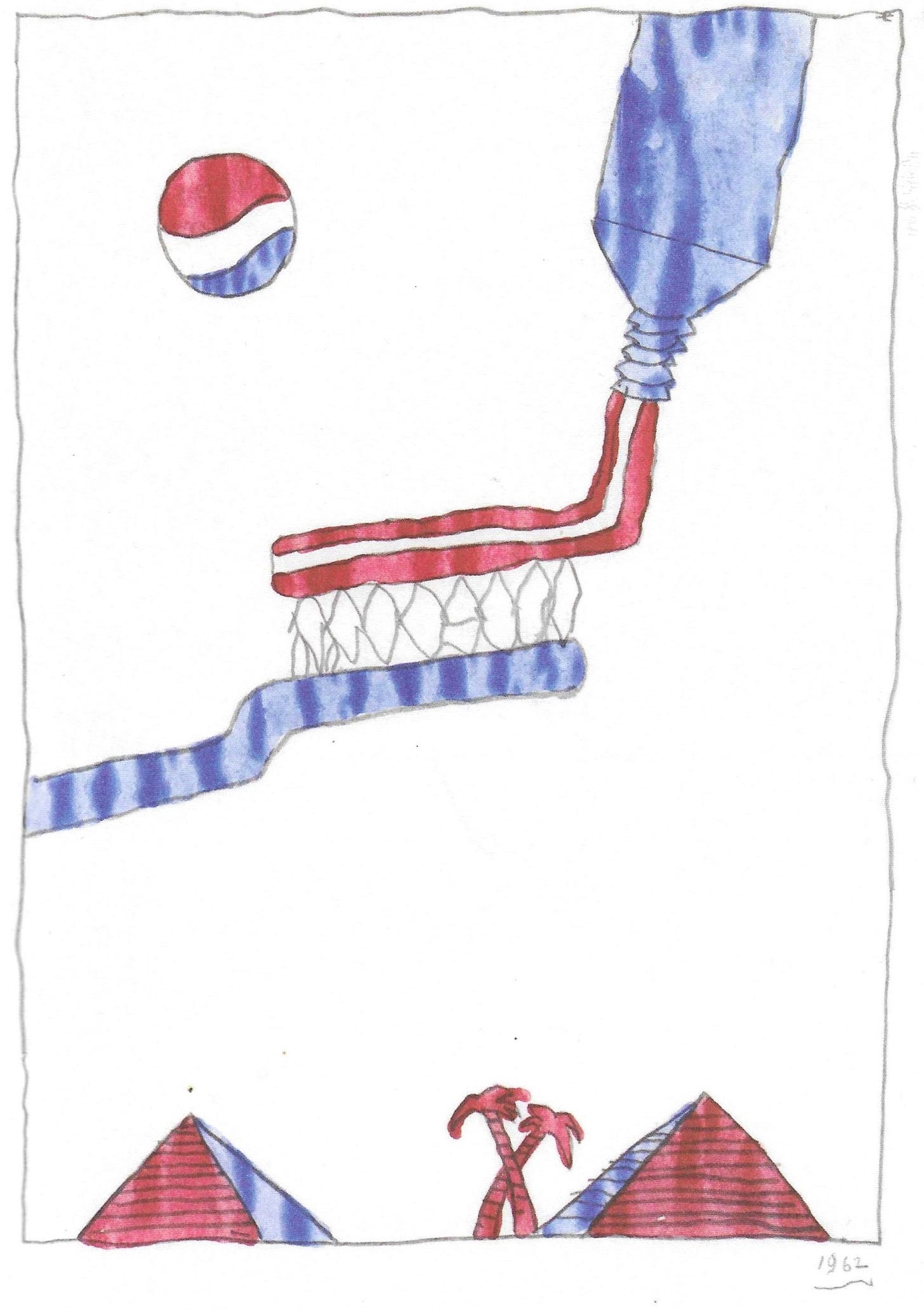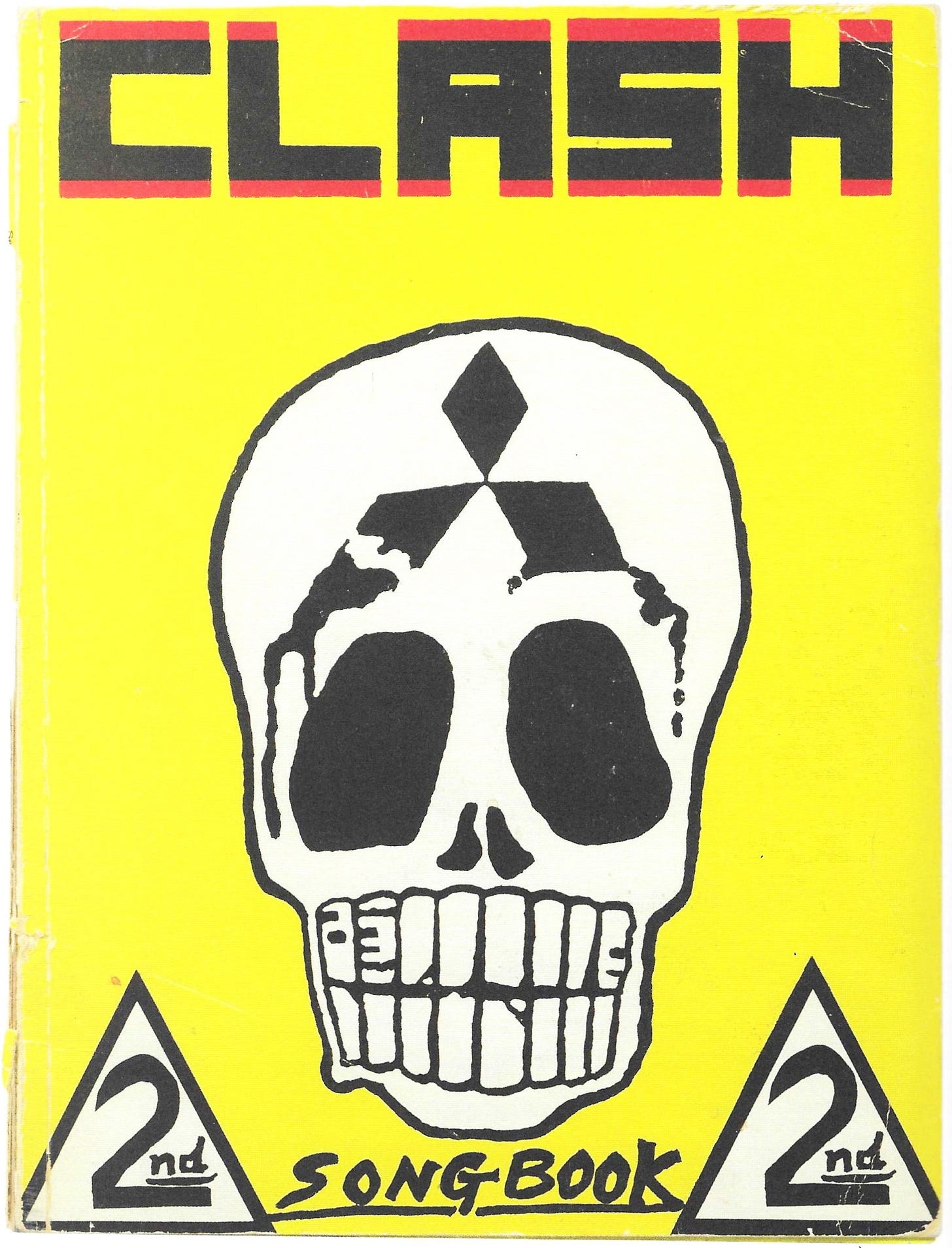Artist Derek Boshier died earlier this month. He was 87. Boshier was a minor pop artist, part of that generation that exploded out of England in the late 50s and early 60s. Weirdly enough, Boshier ended up teaching at the University of Houston in the 80s, where he made a big impression on many Houston artists. When I put together a massive exhibit of the comics work of Scott Gilbert in 2016, he told me that his strip, True Artists Tales, started as an assignment for Boshier’s special projects class. The one condition that Bosher required of Gilbert for the assignment was that he had to get it published.
Needless to say when his death became known, my social media feed was filled with Boshier’s former students reminiscing about the man and his influence on them. I’ve kept my silence because I barely knew Boshier. I only met him twice. After his time at the University of Houston, he moved to Los Angeles, where he lived out the rest of his life.
But just after Boshier died, a new book of his drawings was published by a very funky small press in Los Angeles called Hat & Beard. The book was published this year, but I don’t know if Boshier had a chance to see Derek Boshier Drawings in print before he died.
The cover is interesting to me because it amply demonstrates what differentiated Boshier from so many of his Pop art contemporaries. A lot of pop art is typified by a sleek, commercial look. Think of Ed Ruscha, James Rosenquist, Roy Lichtenstein, Tom Wesselman, Mel Ramos, etc. What you never saw in their work is the hand of a draughtsman. They prefered a clean look of modern advertising. Boshier’s work looks more hand-made. Even his early work, when he was deep in the Pop world, has a delightfully and highly personal drawing style.
The “pop” aspect of it is right there on the surface. Boshier had mixed feelings about the ubiquity of American culture, obviously.
The book was edited by Leslie Jones, the curator of prints and drawings at LACMA. She wrote an excellent essay that lays out Boshier’s history as an artist who makes drawings. She is very familiar with his work and his personal history. She relates drawings to his long experience as a teacher, which is an important aspect of Boshier’s life. It was as an art teacher in London that he taught a man named John Mellor at the Central School of Art and Design. They met by chance on the streets of London a few years later. Mellor had changed his name to Joe Strummer by then, and Strummer of course was in the Clash. Boshier ended up collaborating with the band on a book called CLASH 2nd songbook.
For people of my generation, rock and roll artwork was an important part of our lives. We had these large objects that held the music—12 inch vinyl records—and they came in cardboard sleeves that were excellent sites for whatever image they liked—usually a photograph of the musical artist, but increasingly in the 70s, album covers featured artwork—occasionally by “famous” artists. I remember as a college student being really excited that Jasper Johns did a cover for the Talking Heads. Boshier got in on that action in about the coolest way possible.
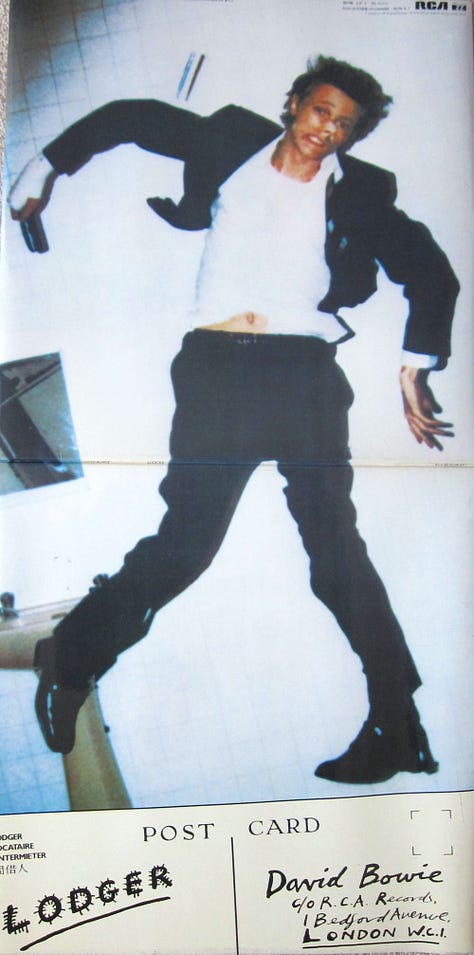
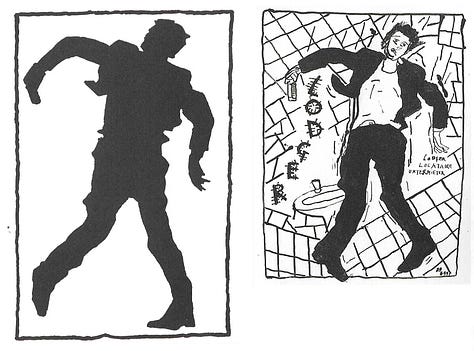
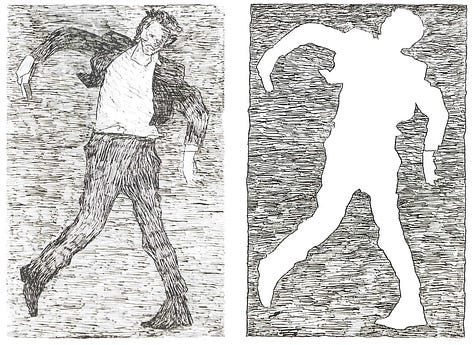
In 1979, he got the job to produce the cover of David Bowie’s album Lodger. He and Bowie clearly collaborated quite a lot. Boshier made the focus of the cover a decidedly unglamorous photo of the hyperglamorous star, and has returned to this image from time to time in has career as a draughtsman.
There was a kind of artsy teenage glamour about the idea of great artists doing rock and roll album covers, which must be completely gone now. (Hardly anyone buys vinyl records anymore.) But Derek Boshier produced one of the most memorable album covers ever. Then he moved to Houston.
His Texas-era art is almost neoexpressionist. It has a very different feel from his 60s and 70s work—darker and more menacing.
Keep reading with a 7-day free trial
Subscribe to The Great God Pan Is Dead to keep reading this post and get 7 days of free access to the full post archives.





